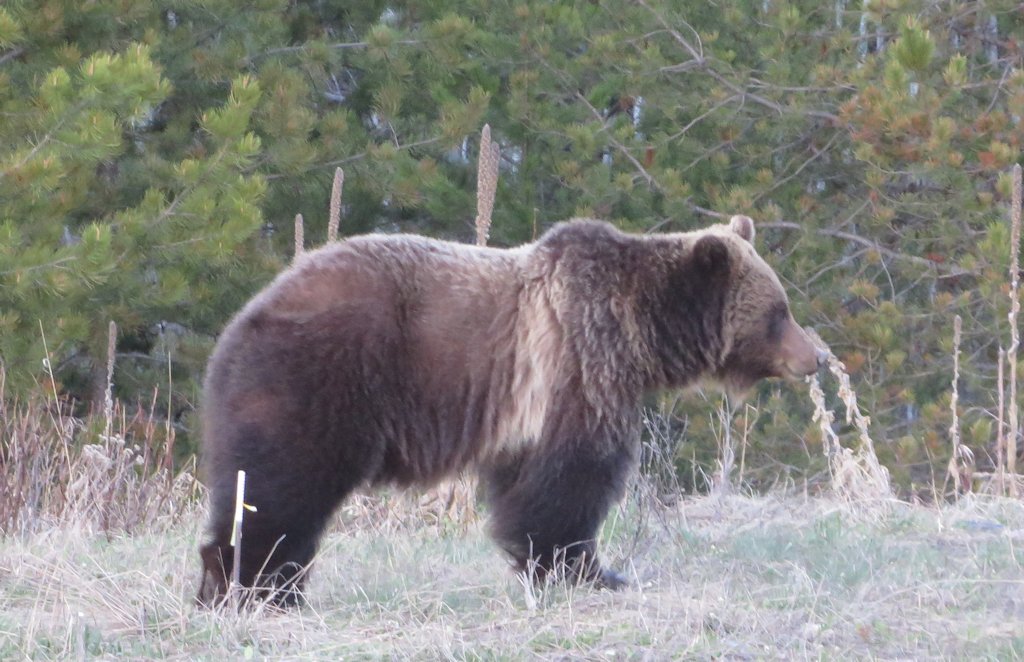
Debo Powers, NFPA Vice President, attended the spring Northern Continental Divide Ecosystem grizzly bear management meeting yesterday. Here is her report:
I remember the old days when Chuck Jonkel held an annual Grizzly Bear Research meeting in Sondreson Hall to share grizzly bear research with North Fork landowners. We would sit on the uncomfortable wooden benches in the sweltering temperatures of a hot summer day and listen to the enthusiastic reports from young bear researchers. Those were the meetings that fanned the flames of my love for grizzly bears.
It has been many years since those meetings happened, but the memories associated with them prompted me to attend Wednesday’s meeting of the Interagency Grizzly Bear Committee (IGBC), which was held in the conference room of the Hungry Horse Ranger Station. Rather than the animated stories of youthful researchers filled with an infectious passion for learning about grizzlies in order to save them from extinction, today’s meeting featured reports from people from various agencies and tribes who have successfully brought about grizzly bear recovery in the Crown of the Continent. It’s amazing to see how things can change in a few decades when humans work together to save a fellow species.
The packed meeting was facilitated with humor and style by Deb Mucklow, the Spotted Bear District Ranger. Numerous agencies and tribes participated in the meeting. Members of the public , representatives from various environmental groups, and reporters from Flathead Beacon, Hungry Horse News, and NF News were present in the audience.
The reports were fascinating and focused on the conservation strategies that have been used by different groups in the Northern Continental Divide Ecosystem (NCDE). Some of the topics covered were: the effectiveness of food storage orders to decrease grizzly habituation, educational resources to train humans to operate awarely in grizzly country, the use of snow rangers and fly-overs to monitor snowmobiling in grizzly habitat (especially when bears are emerging from dens), and reports from management officials, like Tim Manley, on bear conflicts this spring.
Rick Mace, who will be retiring soon, received a beautiful plaque with a huge grizzly paw for his three decades of leadership in grizzly bear conservation and management. Afterwards, he presented the results of his trend monitoring research on grizzly bear populations in the 23 management units of the NCDE. It was nice to notice that we live in one of most densely populated grizzly habitats in the Northern Continental Divide Ecosystem. Rick’s final written report will be available in a few months.
It was a day of information and sharing . . . a day well spent, despite the beautiful weather that beckoned us to be outdoors in grizzly country.